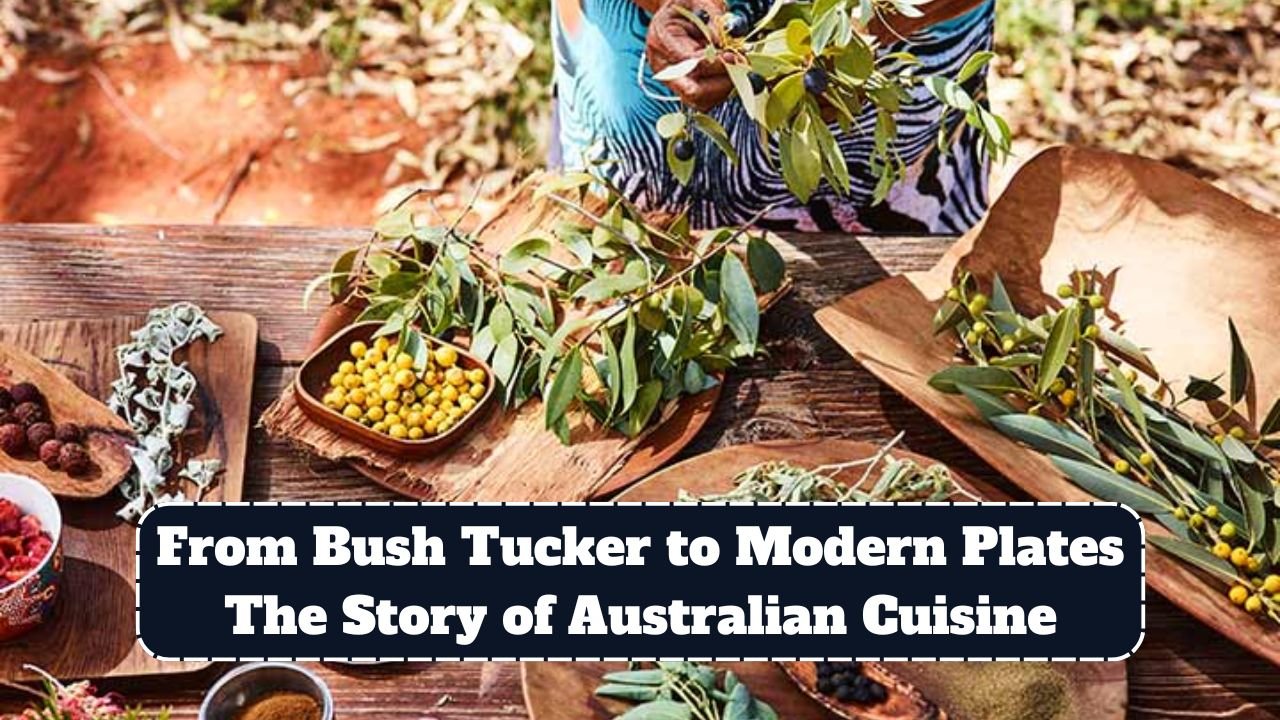From Bush Tucker to Modern Plates: It was Adelaide in the 1950s. Cars were not common in those days. Groceries were delivered to the door by delivery vans, rather than by shoplifting. The milkman would drop off a pint of milk in our bucket early in the morning, while huge ice cubes were brought into the house with a long pair of tongs to keep the icebox cold.
The vegetable vendor would come in a big green van, picking out fresh vegetables for the family. Bread was delivered to the house by horse-drawn cart. It was a different time — slow, simple, but heartfelt.
Grandma’s Food: Simplicity in Taste
My grandmother cooked in our house. Her food was very simple – shepherd’s pie, lamb chops, apple pie and custard were common dishes. One special dish was “tripe in white sauce” which she would make on special occasions. Believe me, I loved that dish!
The most fun after school dish was “jubilee cake” – a South Australian specialty. It was a tea time cake with dried fruit, iced and sprinkled with coconut powder. When eaten with butter, it tasted better than any cake in the world.
From the garden to the kitchen
The biggest comfort my grandmother had in those days was fresh produce from our garden. Many people were deprived of these facilities at that time, but our garden grew a lot of vegetables and fruits. This was why Grandma’s food was simple yet full of flavor.
My grandfather also had a special contribution in the kitchen – stories. When he sat at the dining table, he would tell us stories from his life and also instruct us to sit straight.
Today’s Australian food: A confluence of diversity and taste
Today’s Australian food is completely different from before. Now food is not just for filling the stomach, but has become a celebration of culture and taste. The long aisles of supermarkets offer spices and ingredients from all over the world. Food is no longer limited to just “meat and three veg” (meat and three vegetables), but Asian dishes like stir-fry and chicken curry have also become common.
Today we eat about 116 million serves of sushi every year, which has started competing with the traditional meat pie (177 million serves). This change is not only in taste, but also a big change in our thinking and lifestyle.
Change in meat consumption
There was a time when we used to eat 50 kilograms of beef every year. Now that figure has fallen, and chicken has taken its place. Today the average Australian eats 38kg of chicken annually, while beef consumption has come down to 33kg. Lamb and mutton consumption is now just 14kg, one-fifth of what it used to be.
Even so, including pork, ham, bacon and other meats, we still eat three times more meat than the world average.
Influence of science, capitalism and cities
While many countries have an agricultural food tradition, Australia has a different story. Its food history has evolved from a modern, urban, industrial and scientific perspective, not a traditional one. Capitalism has also played a big role in this, establishing food as a business.
The future of culture and taste
Today’s Australian food is full of diversity – it can be seen the influence of Europe, Asia, Africa and America. People are now trying recipes from different countries at home. Even children are beginning to love sushi, pasta, tacos and Thai curry.
Australian food in the future will be even more diverse and inclusive — as we focus on health and sustainable lifestyles, not just taste.
Conclusion: Where simplicity meets richness
Food was once just a necessity, but now it has become part of our identity. Our grandmothers’ simple yet nutritious recipes remind us that true taste lies in freshness, simplicity and eating together as a family. Today’s modern, global and colourful cuisine offers a new experience — one that blends tradition and innovation.
Australian food is not just a recipe, but a story of changing mindsets, society and culture over time — which can be felt with every bite.
